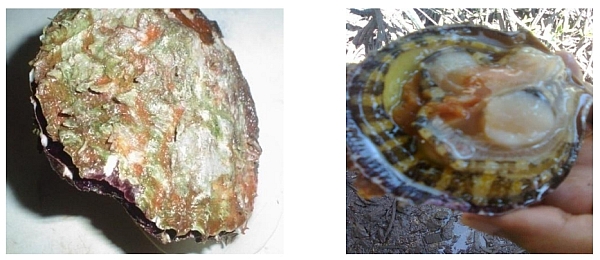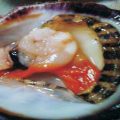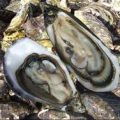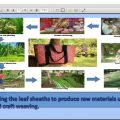The culture of a Surigao oyster species, Tikod Amo, is seen to boost Philippines’ 15,000-20,000 metric ton (MT) yearly oyster production which has prospective export markets in China and South Korea.

The Surigao Del Sur State University (SDSSU) and the Bureau of Agricultural Research (BAR) have been working on the culture technology of Tikod Amo after finding this possible with the present natural growth process of Tikod Amo (Spondylus sp.), in the wilds.
The support for its culture will generate livelihood among residents around Lianga Bay, Barobo, Surigao del Sur with its extensive demand even for export.
“Koreans and Chinese who come to the Philippines to buy sea cucumber for export are also willing to export Tikod Amo if there’s a supply. One interested supplier wanted to buy at least 300 kilos per week,” according to Gemma A. Asufre of the SDSSU.
Price of oyster in the market is very attractive at P400 per kilo for the unshelled meat.
But the local production cannot even adequately supply demand from local hotels and restaurants.
Very important, the culture technology being developed will enable sustainable production as the practice of gatherers of spat (baby oysters) from the wilds destroy very small oysters.
Because of the dire practice, oyster catch was observed to have declined by 40 to 60 percent between 2006 to 2008.
The spats are gathered at a length of one to three centimeters (cm). They are moved to fishpens near the Barobo Bay Mariculture Zone where they are fattened up to four inches length in four to five months.
With the culture technology, environment-friendly systems can be employed.
“The culture of these unique oyster species will not only create an alternative livelihood for oyster gatherers but will make them collaborators in a sustainable farming system that will preserve our coastal resources,” said BAR Director Nicomedes P. Eleazar.
BAR funded the project on the “Culture Technology Generation for Tikod Amo. SDSSU is also proposing for BAR’s financing a P1 million verification study of the newly generated Tikod Amo culture technology in a polyculture system and a P2 to P3 million project for hatchery development for Tikod Amo.
Polyculture
SDSSU’s recommended culture system is the bottom polyculture where oysters are grown together with seaweeds and fishes like milkfish and siganid in the mariculture areas of Barobo Bay.
The integration of oysters in a polyculture system may be applied on 146 hectares of fishpens in the mariculture zone.
This will expand employment both among mariculture fishermen and oyster gatherers. Such partnerships can be worked out as the project is in collaboration with the Bureau of Fisheries and Aquatic Resources, Caraga Fishery Research and Development Center, and the Barobo and Surigao del Sur local governments.
DNA of the unique species
Tikod Amo is an oyster under the genus spondylus. The SDSSU, with its researchers Asufre and Miguel Baay, is further trying to determine its species identification. This may be important in the culture of this special species that has uniquely delicious taste reportedly owing to its adductor muscle.
“What is more interesting is that this species seems to be unknown in the international species nomenclature database. We found no information that describes its biological features, so we assumed Tikod Amo is a new species,” said Asufre.
Tikod Amo is even aesthetically attractive with the five colors of its internal parts.
SDSSU is now determining the difference between Tikod Amo and a very related oyster species, Spondylys squamosos, to which it has a five percent difference in DNA.
“This difference will be further verified so that Tikod Amo could be considered as new species,” said Asufre and Baay in a report.
The BAR-SDSSU project was able to generate the culture technology as it worked with the gatherers of Tikod Amo.
Plankton communities for the oyster’s food were studied along with an inspection on the physico-chemical properties of the coastal water.
Their study yielded 245 phytoplankton species and 128 zooplankton species as food source.
The spatfall or spawning season for Tikod Amo also had to be known in order to ensure that gatherers do not disturb the oyster habitat at reproduction season. On the study of the spawning season, the researchers looked into larvae counts and studied gonad maturity.
Culture devices
Part of the culture technology is the use of an effective spat collector or cultch material. Monthly growth or increment in size of the spats was observed, and their survival had to be watched in order to preserve higher survival percentage.
For the coastal water chemical study, parameters that determined wellness of the coastal waters included temperature, water transparency, salinity, total suspended solids, pH, dissolved oxygen, ammonia nitrogen, nitrate, phosphorus, monthly rainfall, bottom depth and type, and water movement.
Needed for the culture were spat collector devices (netlon or tubular net, bamboo posts). For the culture system in the bay, longlines and raft were used.
Philippine oyster farming
Oyster farming in the country is known for most Metro Manila residents to be found in Bacoor Bay in Bacoor and Kawit tons in Cavite.
Size of farms is 0.5 to five hectares. Production is around 50 MT per hectare, according to Loida Samsin in a Food and Agriculture Organization (FAO) study.
The farms thrive with their short distance to the big Metro Manila market.
The species usually cultured are Crassostrea iredalei, C. cucullata, C. malabonensi and C. palmipes.
There are established culture methods in Bacoor Bay which are the stake that uses mature bamboos and the hanging method where cultches are installed in oyster plots consisting of oyster shells attached in polyethylene ropes. Oysters from Cavite are sold either with shell-on or shucked.
“The present supply of oysters hardly meets local demand. Many farm operators are hesitant to enter into contracts with businessmen from other countries because they are afraid they may not be able to meet required quantity stipulated in the contract,” said Samsin.
Other oyster farms
Aside from Cavite, oysters in the country are found in the coastal waters of Mariveles, Bataan, along the coast of Northern Luzon, Lingayen Gulf, Tayabas and Sorsogon, Batangas Bay, Banate Bay in Iloilo, Binalbagan, Hinigaran, and Himamaylan, Negros Occidental.
There are also oysters found in Catbalogan, Western Samar, Northern Leyte, and Palawan. However, commercial farms are mostly concentrated in Bulacan, Capiz, Cavite, pangasinan, Sorsogon, and Negros Occidental, said the FAO.
Oyster farms in the country as of 1987 totalled to 707 hectares. Production in 1982 was 19,017 MT.
The industry is plagued with poor sanitary quality and siltation in coastal areas. Farms are also displaced by housing and industrial estates burgeoning in coastal areas.
. “Considerable work on bivalve (class of marine mollusks where oysters belong) deputation has been recently carried out by the Department of Fish Processing Technology of the University of the Philippines in the Visayas in cooperation with the German Deutsche Gesellschaft für Technische Zusammenarbeit, said FAO.
“A simple purification unit has been successfully tested, however, the installation of such a system by single farmers would not be economically feasible due to the present low price of oysters.”
For any questions, please call Ms. Gemma A. Asufre, SDSSU, 0946-333-0229; for interview requests, 0916-266-6604







Hello, I just want to ask. what species of mollusk that prey on tikad amo in surigao del sur.? thank you
tikod amo is present in barobo municipality of surigao del sur
How can I purchased seeds to start. Any brochure to follow in rearing this kind of oyster. I am planning to start five hectares in Dumangas, Iloilo. My email… elmor.sudara@yahoo.com / FB elmor sudara. Thank you. Any information is valuable to me.